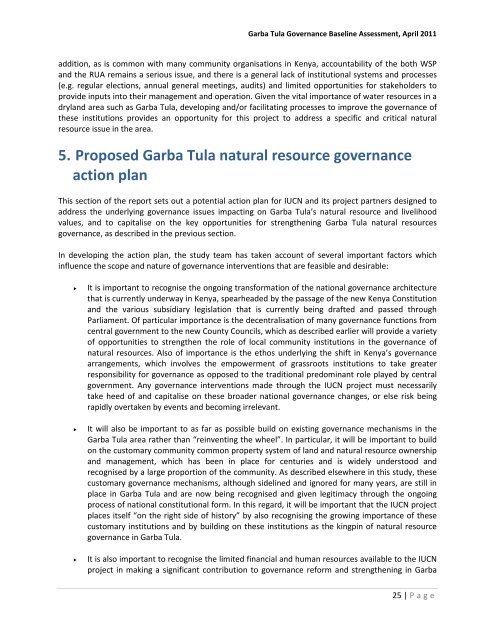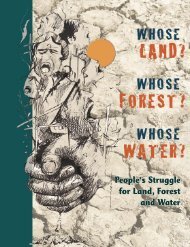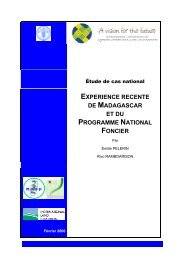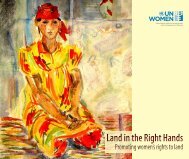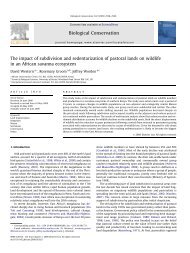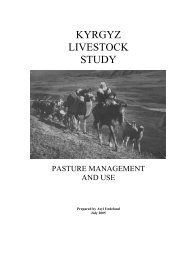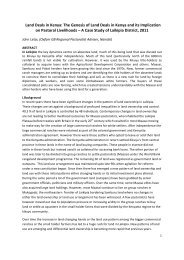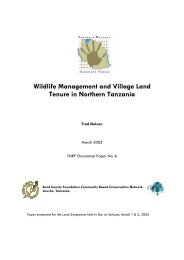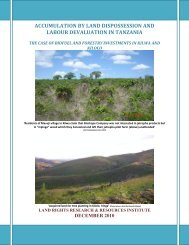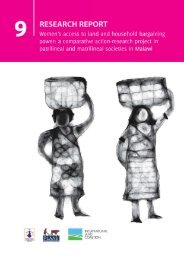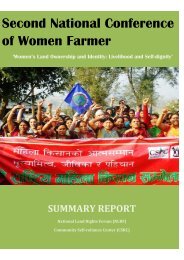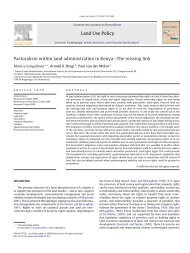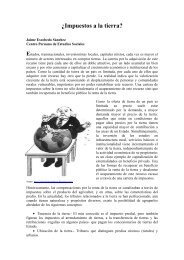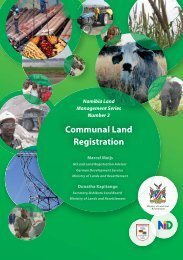Garba Tula Governance Assessment Final Report ... - Land Portal
Garba Tula Governance Assessment Final Report ... - Land Portal
Garba Tula Governance Assessment Final Report ... - Land Portal
You also want an ePaper? Increase the reach of your titles
YUMPU automatically turns print PDFs into web optimized ePapers that Google loves.
<strong>Garba</strong> <strong>Tula</strong> <strong>Governance</strong> Baseline <strong>Assessment</strong>, April 2011<br />
addition, as is common with many community organisations in Kenya, accountability of the both WSP<br />
and the RUA remains a serious issue, and there is a general lack of institutional systems and processes<br />
(e.g. regular elections, annual general meetings, audits) and limited opportunities for stakeholders to<br />
provide inputs into their management and operation. Given the vital importance of water resources in a<br />
dryland area such as <strong>Garba</strong> <strong>Tula</strong>, developing and/or facilitating processes to improve the governance of<br />
these institutions provides an opportunity for this project to address a specific and critical natural<br />
resource issue in the area.<br />
5. Proposed <strong>Garba</strong> <strong>Tula</strong> natural resource governance<br />
action plan<br />
This section of the report sets out a potential action plan for IUCN and its project partners designed to<br />
address the underlying governance issues impacting on <strong>Garba</strong> <strong>Tula</strong>’s natural resource and livelihood<br />
values, and to capitalise on the key opportunities for strengthening <strong>Garba</strong> <strong>Tula</strong> natural resources<br />
governance, as described in the previous section.<br />
In developing the action plan, the study team has taken account of several important factors which<br />
influence the scope and nature of governance interventions that are feasible and desirable:<br />
It is important to recognise the ongoing transformation of the national governance architecture<br />
that is currently underway in Kenya, spearheaded by the passage of the new Kenya Constitution<br />
and the various subsidiary legislation that is currently being drafted and passed through<br />
Parliament. Of particular importance is the decentralisation of many governance functions from<br />
central government to the new County Councils, which as described earlier will provide a variety<br />
of opportunities to strengthen the role of local community institutions in the governance of<br />
natural resources. Also of importance is the ethos underlying the shift in Kenya’s governance<br />
arrangements, which involves the empowerment of grassroots institutions to take greater<br />
responsibility for governance as opposed to the traditional predominant role played by central<br />
government. Any governance interventions made through the IUCN project must necessarily<br />
take heed of and capitalise on these broader national governance changes, or else risk being<br />
rapidly overtaken by events and becoming irrelevant.<br />
It will also be important to as far as possible build on existing governance mechanisms in the<br />
<strong>Garba</strong> <strong>Tula</strong> area rather than “reinventing the wheel”. In particular, it will be important to build<br />
on the customary community common property system of land and natural resource ownership<br />
and management, which has been in place for centuries and is widely understood and<br />
recognised by a large proportion of the community. As described elsewhere in this study, these<br />
customary governance mechanisms, although sidelined and ignored for many years, are still in<br />
place in <strong>Garba</strong> <strong>Tula</strong> and are now being recognised and given legitimacy through the ongoing<br />
process of national constitutional form. In this regard, it will be important that the IUCN project<br />
places itself “on the right side of history” by also recognising the growing importance of these<br />
customary institutions and by building on these institutions as the kingpin of natural resource<br />
governance in <strong>Garba</strong> <strong>Tula</strong>.<br />
It is also important to recognise the limited financial and human resources available to the IUCN<br />
project in making a significant contribution to governance reform and strengthening in <strong>Garba</strong><br />
25 | P a g e


